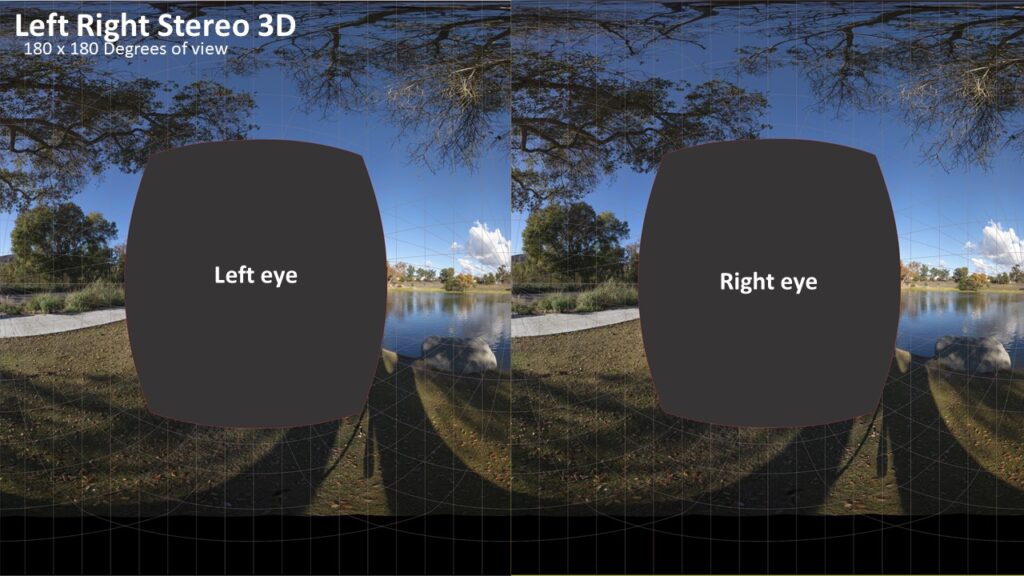It all comes down to how do you store spherical data on the flat surface of an image. In the world of VR Video we have a few answers. Each has its own advantages and disadvantages.
Three dimensional images (3D) are produced by providing a unique image to each eye. Each is slightly offset from the other. For this reasons 3D images sacrifice image quality by designating one half of the available resolution to each eye. In the examples below you will see how this is achieved.
When we talk about angles of view within an image, we always talk horizontal axis first followed by vertical. A complete spherical image is listed as 360×180. You can look 180 degrees (top to bottom) in any of the 360 degrees around you. Lets look at the three most popular formats.
2D / 360×180
This is the most popular form of equirectangular imagery. While only providing two dimensional, or flat, images it does give maximum usage of pixels on any viewing direction.

3D / 360×180 / Top Bottom.
This very popular format allows for complete three dimensional viewing in all directions by splitting the image area to above and below. Your VR Viewing software will then feed the appropriate image to the corresponding eye.

3D / 180 x 180 / Left-Right
A third quite common format is Left-Right 180. This format allows for the higher resolution detail in a three dimensional format by only providing the forward 180 degree field of view.

While there are other variants, these are the most common.
